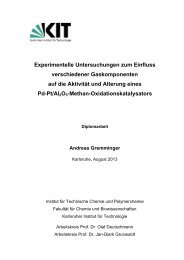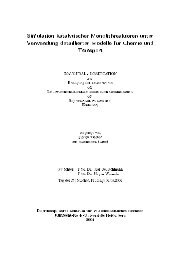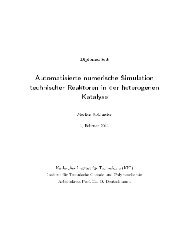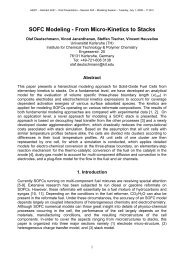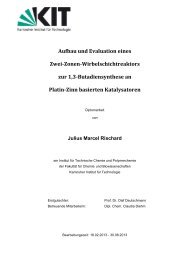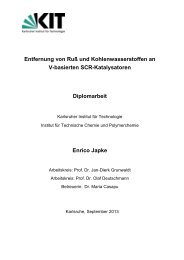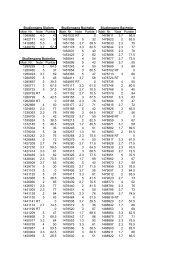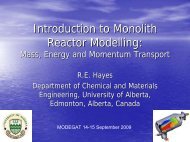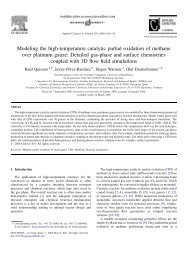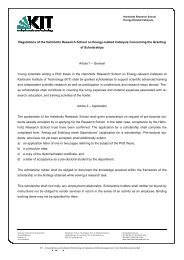Fuel Processing for Fuel Cells - Institut für Technische Chemie und ...
Fuel Processing for Fuel Cells - Institut für Technische Chemie und ...
Fuel Processing for Fuel Cells - Institut für Technische Chemie und ...
Create successful ePaper yourself
Turn your PDF publications into a flip-book with our unique Google optimized e-Paper software.
Author's personal copy<br />
Heat transport in solid wall<br />
36 Torsten Kaltschmitt and Olaf Deutschmann<br />
Transport of<br />
momentum,<br />
energy,<br />
species<br />
Gas-phase<br />
reactions<br />
Thermal<br />
radiation<br />
Diffusion<br />
Adsorption,<br />
surface reactions,<br />
desorption<br />
Figure 9 Sketch of the physical and chemical processes occurring in a catalyst-coated<br />
honeycomb monolith. Many length and time scales have to be considered simultaneously<br />
reaching from a scale of nanometer and picosecond (e.g., surface reactions),<br />
to one of micro/millimeter and micro/millisecond (e.g., internal/external diffusion),<br />
and to one of centimeter and second (e.g., heat transport in solid structures); taken from<br />
Janardhanan and Deutschman (2011).<br />
and intermediates desorb and diffuse back into the bulk flow. Due to the<br />
high temperatures, the chemical species may also react homogeneously in<br />
the gas phase. In catalytic reactors, the catalyst material is often dispersed<br />
in porous structures such as washcoats or pellets. Mass transport in the<br />
fluid phase and chemical reactions are then superimposed by diffusion of<br />
the species to the active catalytic centers in the pores. The temperature<br />
distribution depends on the interaction between heat convection and<br />
conduction in the fluid, heat generation/consumption due to chemical<br />
reactions, heat transport in the solid material, and thermal radiation. Both<br />
variation of the feed conditions in time and space and heat transfer<br />
between the reactor and the ambience result in a nonuni<strong>for</strong>m temperature<br />
distribution over the entire monolith, which means that the behavior will<br />
differ from channel to channel (Windmann et al., 2003).<br />
The challenge in catalytic fuel processing is not only the development<br />
of new catalysts to obtain the desired product, but also the <strong>und</strong>erstanding<br />
of the interaction of the catalyst with the surro<strong>und</strong>ing reactive flow field.<br />
Sometimes, the use of these interactions alone can lead to the desired<br />
product selectivity and yield. For detailed introductions into transport<br />
phenomena and their coupling with heterogeneous reactions, readers are



